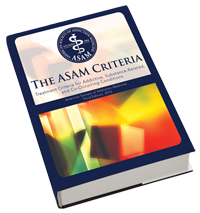
Hello, my name is Roy A. Blankenship and one of my specialty areas of professional clinical treatment is addiction. I hope this page is helpful to you.
First of all, let’s look at a definition of addiction, then consider cooccurring disorders, followed by the different levels of addiction treatment that you should consider.
“Addiction is a primary, chronic disease of brain reward, motivation, memory, and related circuitry. Dysfunction in these circuits leads to characteristic biological, psychological, social, and spiritual manifestations. This is reflected in an individual pathologically pursuing reward and/or relief by substance use and other behaviors. Addiction is characterized by inability to consistently abstain, impairment in behavioral control, craving, diminished recognition of significant problems with one’s behaviors and interpersonal relationships, and a dysfunctional emotional response. Like other chronic diseases, addiction often involves cycles of relapse and remission. Without treatment or engagement in recovery activities, addiction is progressive and can result in disability or premature death” (American Society of Addiction Medicine, 2013, p. 10; Also see Wise & Koob, 2014).
References
American Society of Addiction Medicine. (2013). The ASAM criteria: Treatment criteria for addictive, substance-related, and co-occurring conditions (3rd ed.). Carson City, NV: The Change Companies.
Wise, R. A., & Koob, G. F. (2014). The Development and Maintenance of Drug Addiction. Neuropsychopharmacology, 39(2), 254-262. doi:10.1038/npp.2013.261
Compared with the general population, people with a mental disorder are more likely to experience a substance use disorder and people with a substance use disorder are more likely to have a mental disorder. According to the National Survey of Substance Abuse Treatment Services (N-SSATS), about 45% of Americans seeking substance use disorder treatment have been diagnosed as having a co-occurring mental and substance use disorder. Co-occurring disorders were previously referred to as dual diagnoses.
According to SAMHSA’s 2014 National Survey on Drug Use and Health(NSDUH) (PDF | 3.4 MB), approximately 7.9 million adults in the United States had co-occurring disorders in 2014. Co-occurring disorders can be difficult to diagnose due to the complexity of symptoms. In many cases, people receive treatment for one disorder while another disorder remains untreated. This may occur because both mental and substance use disorders can have biological, psychological, and social components. Other reasons may be inadequate provider training or screening, an overlap of symptoms, or that other health issues need to be addressed first. In any case, the consequences of undiagnosed, untreated, or undertreated co-occurring disorders can lead to a higher likelihood of experiencing homelessness, incarceration, medical illnesses, suicide, or even early death.
People with co-occurring disorders are best served through integrated treatment. With integrated treatment, practitioners can address mental and substance use disorders at the same time, often lowering costs and creating better outcomes. Increasing awareness and building capacity in service systems are important in helping identify and treat co-occurring disorders. Early detection and treatment can improve treatment outcomes and the quality of life for those who need these services.
Resource: Co-Occurring Disorders Introductory Video – SAMHSA – https://youtu.be/nLseAvC8Heo

Levels of Treatment
The ASAM Criteria text describes treatment as a continuum marked by four broad levels of service and an early intervention level. Within the five broad levels of care, decimal numbers are used to further express gradations of intensity of services.These levels of care provide a standard nomenclature for describing the continuum of recovery-oriented addiction services. With the ASAM CONTINUUM™, clinicians are able to conduct a multidimensional assessment that explores individual risks and needs, as well as strengths, skills and resources. ASAM CONTINUUM then provides clinicians with a recommended ASAM Level of Care that matches intensity of treatment services to identified patient needs.
Don’t settle for a service that is less than what you need. And, don’t pay for a higher level of service than you need.
MAKE SURE THE TREATMENT PROVIDER YOU CHOOSE IS FAMILIAR WITH THIS INDUSTRY STANDARD METHODOLOGY FOR CLASSIFYING TREATMENT SERVICES!
Read about the different ASAM Treatment Levels by clicking each of the 5 buttons below:
Reach Out To Me Today!
Let me evaluate and assess your situation and help you decide what level of care you need to look for when choosing addiction treatment services!
